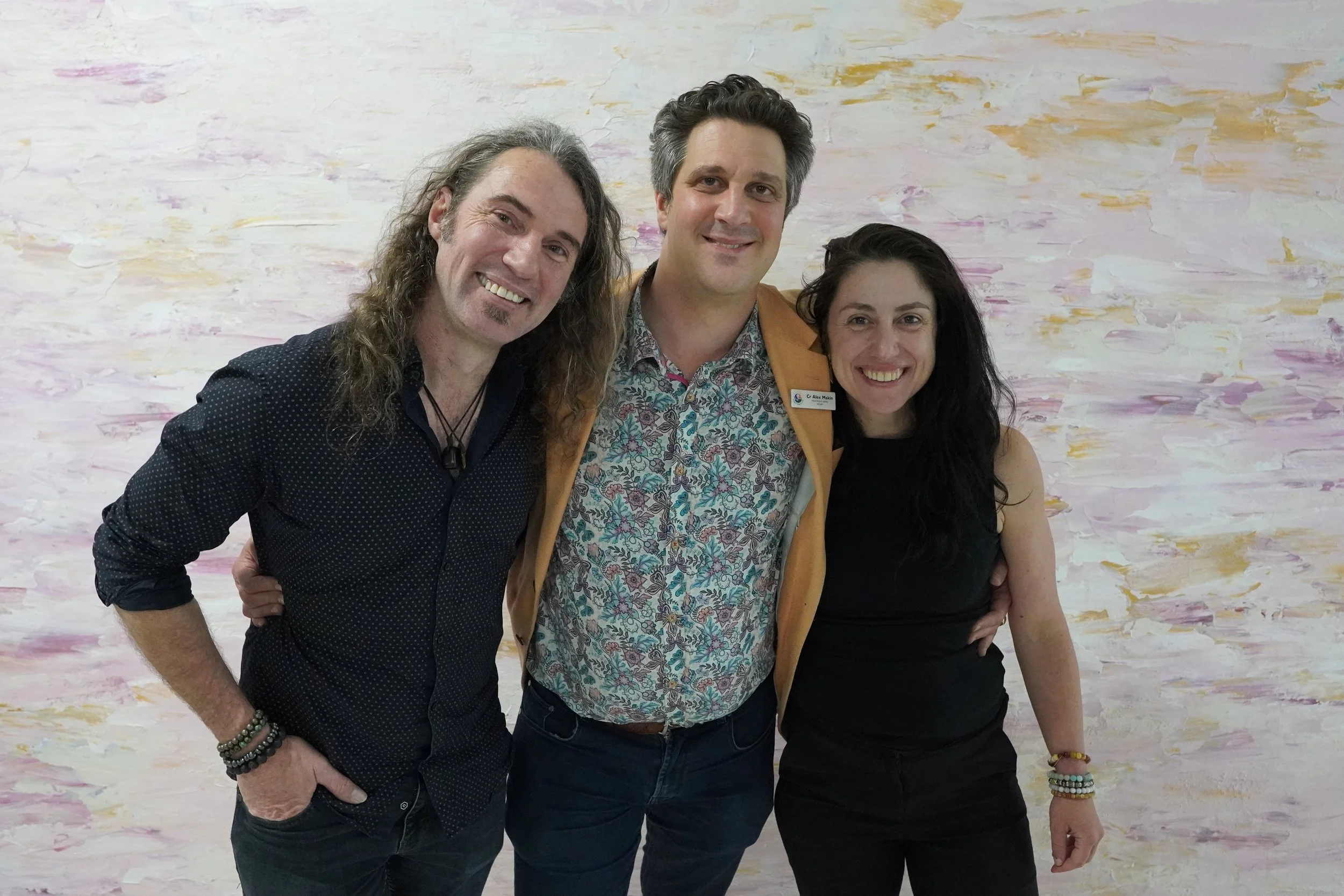ANIMA MUNDI: The Wall That Breathes
Anima Mundi began not as an atmospheric proposition, a material field designed to respond to presence.
Created as the central spatial gesture for OBSERVER at Romulus Folio Gallery, the work functions as a large-scale impact wall: a textured expanse of palette-knife strokes in whites, pinks, pearl, and gold that shifts subtly under light and movement. Rather than anchoring the viewer’s attention, it disperses it. The wall becomes a porous membrane between the artworks, the space, and the people entering it.
In developing Anima Mundi, I was interested in how an environment might behave like a witness, how a surface could register the gestures, rhythms, and disturbances of the studio, and later, the gallery itself. The wall carries layers of mixed paint, built up in vertical and diagonal planes, creating a tactile ground that will continue to crack, settle, and transform over time. Impermanence is not a flaw of the work; it is part of its conceptual architecture.
Material Language and the Relational Field
Working with a palette knife is an extension of my own body’s way of understanding the world: fast, intuitive, direct. For this piece, the knife allowed me to shape the wall as a relational field rather than an image. Up close, the surface reveals bumps, ridges, fractures, and reflective pigments that catch the viewer’s eye for only a moment before releasing it back into space.
This dynamic is intentional. The wall is not a backdrop in the traditional sense; it is a participant in the exhibition’s choreography of perception. As audiences move through the gallery, light shifts across the surface, generating micro-movements that echo the exhibition’s central inquiry:
What does it mean to observe, and what does it mean to be observed?
A Companion to the Exhibition, Not a Centrepiece
Anima Mundi holds the room without dominating it. It threads the individual artworks in OBSERVER into a shared atmosphere, creating a continuity of tone while allowing each artist to remain distinct.
In many ways, the wall operates like breath, grounding, rhythmic, quietly structuring the experience of the exhibition without insisting on itself. This quality is important to my practice: I’m drawn to making pieces that attend to the emotional and psychological architecture of a space as much as its visual language.
Process and Temporality
Created across exhibition install, the work is built through cycles of layering, scraping back, remixing, and displacement. At each stage, I allowed the surface to dictate its own logic, responding to the material’s behaviour rather than forcing it into a predetermined plan.
The cracks and shifts that will increasingly appear as the paint cures are an embedded part of the work’s life. I think of them as timestamps of the wall’s own evolution, subtle reminders of the way all surfaces carry memory.
Positioning Within My Broader Practice
Anima Mundi expands the textural and relational concerns of my recent body of work presented at Melbourne Design Week, the Melbourne Design Show, and ongoing exhibitions at Romulus Folio Gallery. It reflects my interest in sensory environments, spatial psychology, and the poetics of attention, themes I continue to explore through large-scale textured surfaces and installation-adjacent painting.
While grounded in the materiality of palette-knife practice, this work also opens into a broader inquiry:
How can painting exceed the frame and become a site of encounter?
Romulus Folio Gallery Manager Scott Ross | City of Port Philip Mayor Alex Makin | Interdisciplinary Artist & Curator Angelina Miraibito, Phd
For visitors to OBSERVER, Anima Mundi is where that question begins.
Romulus Folio Gallery, South Melbourne
55 Gladstone Street, South Melbourne, 3205, Vic.
7–30 Nov 2025
Wed–Fri 12–7pm | Sat–Sun 12–5pm | by appointment
Free entry
At Romulus Folio Gallery I am the ongoing artist-in-residence with open studio @ romulusfolio.com.au

